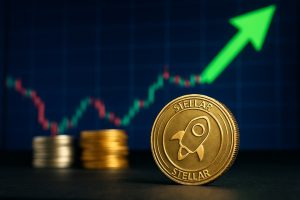- EV sales surged to 1.2 million units in February 2025, driven by an increased demand for battery minerals.
- China dominates 76% of the global EV market and 95% of the world’s battery-grade graphite supply, thanks to early strategic investments.
- The U.S. and Europe face vulnerabilities in their EV supply chains due to slower responses and potential trade disruptions.
- Biographite emerges as a sustainable alternative to traditional graphite, offering cost and environmental benefits.
- Automakers, like Ford, must innovate and adopt local alternatives to mitigate supply chain complexity and reduce costs.
- Relying on tariffs alone is insufficient; developing domestic production and sustainable practices is crucial for self-reliance.
- Legislation like the Inflation Reduction Act promotes local sourcing, enhancing resilience in the EV market.
- Investing in innovation is key to achieving a sustainable and independent future for the EV industry.
The electric vehicle revolution is powering forward, fueling a fierce contest over the very elements that drive it. As EV sales skyrocketed to 1.2 million units in February 2025 alone—a 50% leap from the previous year—the strategic race for battery minerals has grown more intense. Looming large over this landscape is China’s commanding presence. The nation not only captures 76% of the global EV market but also commands 95% of the world’s battery-grade graphite supply. Its dominance is no accident. Recognizing the strategic potential of EV supply chains early, China invested aggressively, securing its position at the apex of this green transition.
Across the Pacific, the scene is markedly different. Both the United States and Europe lagged in their response, leaving industries on both continents vulnerable to supply chain disruptions and trade volatility. Compounding the anxiety are actions like former President Donald Trump’s proposal of a hefty 25% tariff on vehicle imports, unsettling markets and magnifying production uncertainties. Yet, such tariffs provide only a temporary reprieve, failing to confront the intrinsic issue: the overwhelming dependency on foreign minerals.
Emerging innovations, however, offer a beacon of hope. Enter biographite—a ground-breaking alternative sourced from renewable forestry by-products. This novel material promises more than just cost advantages; it significantly trims the carbon footprint of battery production. By harnessing local resources and utilizing low-temperature processing, biographite not only challenges traditional graphite but also reshapes the tariff dynamics that had previously constrained battery mineral sourcing.
Automakers stand at a crossroads. As giants like Ford grapple with projected losses in their EV divisions, the imperative to innovate becomes clearer. Current dependency on intricate global supply networks inflates costs and complicates logistics. Embracing alternatives like biographite represents an opportunity to cut expenses, enhance sustainability, and assert greater control over supply chains. This transition not only relieves economic pressures but also sets the stage for developing a truly carbon-zero vehicle.
Beyond automotive concerns, graphite is intertwined with the wider economic tapestry. Tariffs, while momentarily effective, fall short of addressing the core challenge: an over-reliance on singular international sources. A robust solution lies in nurturing domestic production, propelling innovation in sustainable practices, and bolstering infrastructure for alternative materials. Initiatives like the Inflation Reduction Act signal progress, incentivizing local mineral sourcing in the U.S., while the EU makes strides in permitting reforms.
Ultimately, the journey toward a resilient, self-reliant future requires more than reactive policies. Investing in innovation is indispensable, as illustrated by biographite’s promising advantages. This narrative—powered by ambition and necessity—suggests that a sustainable, efficient, and independent EV market is within reach, awaiting those bold enough to seize it.
Why the Future of EVs Depends on Innovative Battery Solutions: Beyond China’s Dominance
Understanding the Context
The rapid acceleration in electric vehicle (EV) adoption, marked by a remarkable jump to 1.2 million units sold in February 2025 alone, showcases the global pivot towards sustainable mobility. Yet, as demand for EVs soars, the need for essential battery minerals such as graphite becomes crucial. China’s significant control over 95% of the world’s battery-grade graphite highlights a strategic challenge for other major markets like the United States and Europe, who remain exposed to supply uncertainties.
The Impact of China’s Dominance
– Market Control: China’s investment in battery technology and strategic mineral acquisition has cemented its position as the leader in the EV supply chain. This dominance creates vulnerabilities for other countries due to potential disruptions in supply.
– Tariff Implications: Policies such as the proposed 25% tariff on vehicle imports by the U.S. may create temporary barriers but fail to solve the deeper issue of resource dependency.
Biographite: A Sustainable Disrupter
– Innovative Alternative: Biographite, derived from renewable forestry by-products, emerges as a sustainable and locally-sourceable alternative to traditional graphite. Its production involves low-temperature processes leading to reduced environmental impact.
– Shifting Dynamics: By utilizing biographite, automakers like Ford can trim production costs significantly while reducing their carbon footprint, driving them towards achieving true carbon-neutrality.
How-To Steps for Automakers
1. Integrate Biographite: Companies can begin by evaluating their current supply chains and identifying areas for incorporating biographite, focusing on sustainability and cost-efficiency.
2. Localize Sourcing: Invest in local resources and partnerships to minimize reliance on international suppliers, thereby enhancing supply chain resilience.
3. Innovate & Adapt: Stay informed about emerging materials and technologies in battery innovation that promise better efficiency and lower environmental impact.
Real-World Use Cases
– Automotive Manufacturers: By adopting biographite, manufacturers can not only reduce their dependency on foreign graphite but also appeal to eco-conscious consumers.
– Battery Production: Battery manufacturers can collaborate with forestry industries to access biographite, integrating this into current production lines to enhance sustainability.
Industry Trends & Predictions
– Rise of Alternative Materials: As the global focus on sustainability intensifies, the demand for environmentally friendly battery materials like biographite is expected to rise.
– Geopolitical Adjustments: Countries may intensify their efforts to localize mineral sourcing, spurred by legislative incentives such as the Inflation Reduction Act in the U.S. and permitting reforms in the EU.
Pros and Cons Overview
Pros:
– Reduced Carbon Footprint: Biographite offers a significant reduction in the carbon emissions associated with battery production.
– Local Resource Utilization: Supports domestic industries and reduces reliance on international supply chains.
– Cost Efficiency: Potential to decrease the overall cost of battery production.
Cons:
– Transition Challenges: Integrating a new material into existing supply chains could require time and investment.
– Initial Development Costs: New infrastructure and technology for biographite production may involve high initial costs.
Conclusion: Actionable Steps
To pave the way for a resilient and sustainable future in the EV industry, stakeholders must prioritize innovation and local sourcing. Here are some quick tips:
– Invest in Research: Focus on R&D for new battery materials and processing technologies.
– Develop Partnerships: Collaborate with forestry and alternative material suppliers to secure a stable supply of biographite.
– Enhance Policy Frameworks: Advocate for governmental policies that support domestic mineral sourcing and reduce dependency on foreign materials.
By taking these steps, companies and countries alike can reduce their vulnerabilities and chart a path towards a sustainable and independent EV market.
For more insights and updates on sustainable technologies, visit the official sites of major stakeholders in the EV industry like Ford and policy forums such as EUR-Lex.










More Stories
Galactic Chaos Uncovered: NASA’s James Webb Telescope Shatters Old Theories on How the Universe Really Grew
Nvidia Tightens GPU Grip: AMD, Intel Struggle as GeForce RTX 50 Series Dominates 2025
Stellar XLM Set to Explode? Bold Price Predictions Hint at Major 2025 Breakout